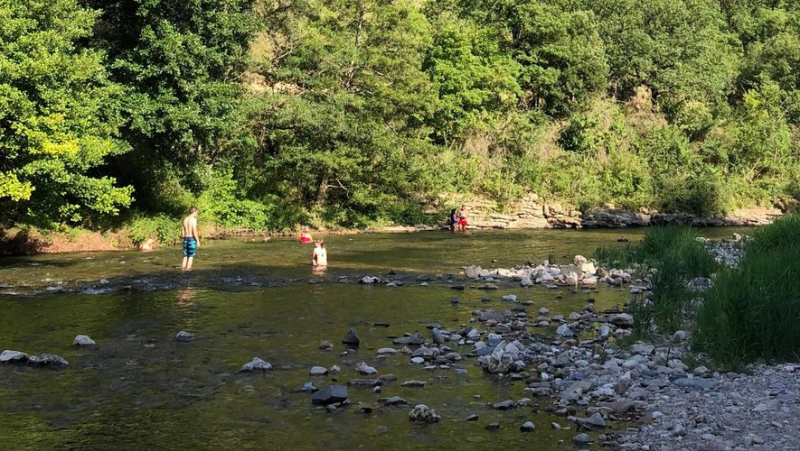Canine poisoning by cyanobacteria on the Tarn, transition to “increased vigilance”

Passage en vigilance renforcée dans le Tarn et la Dourbie. Midi Libre – Romane Levi
As part of the protocol for monitoring the development of cyanobacteria in the Tarn and Dourbie rivers, the Tarn valley from Mostuéjouls to Comprégnac has moved to level three "reinforced vigilance".
Cyanobacteria develop in the Tarn-amont rivers. Cyanobacteria are photosynthetic microscopic living beings. They can be suspended in water (planktonic cyanobacteria) or attached to a submerged mineral or plant support (benthic cyanobacteria). It is the latter that we encounter in the waters of the Tarn.
As specified by the mixed union of the Tarn-amont watershed, “Benthic cyanobacteria preferentially develop in currents, on the surface of pebbles, within biofilms that contain numerous microorganisms (microalgae, bacteria, etc.). Under the effect of currents, nautical activities or aging, these biofilms detach and are carried away by the river to accumulate in the form of flocs in areas of calm water. Cyanobacteria can produce toxins without this having the slightest health impact. The problem arises when cyanobacteria are present in very large numbers and produce toxins in large quantities."
Dog poisoning raises alarm
Last weekend, a dog was poisoned, the origin of which is believed to be cyanobacteria contamination. The Regional Health Agency has decreed a level 3, “increased vigilance” for the Tarn and Dourbie rivers. The municipalities concerned are those of Mostuéjouls, Peyreleau, Rivière-sur-Tarn, La Cresse, Compeyre, Paulhe, Aguessac, Millau, Creissels, Saint-Georges-de-Luzençon, Comprègnac, Montjaux.
Observations on the Tarn and the Dourbie are in progress "in order to note the possible development of cyanobacteria on the Tarn and the Dourbie", as the union points out.
Some safety recommendations
In order to limit the risks of poisoning, some precautions must be taken on the banks of rivers. “Do not play with sticks or pebbles that have been submerged and supervise young people who might put them in their mouths. Do not swim in areas where flocs have accumulated. Keep your dog on a leash and do not let it access the river. For fishing, do not eat small fish whole, gut and ether large fish quickly before eating or freezing".
Situation map of the proliferation of cyanobacteria Website of the union : https://www.tarn-amont.fr




